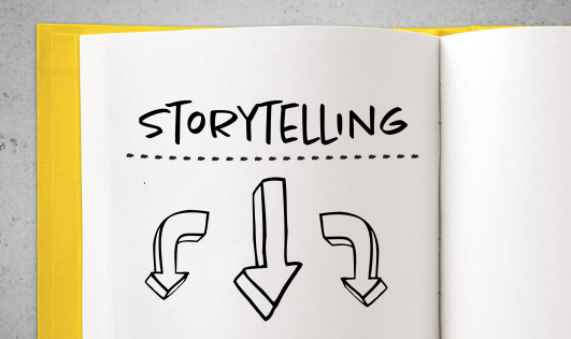Each product or service presentation will greatly benefit from a visual story that communicates its intent, but creating a successful one can be tricky. Where are you starting? How many words do you want to use on will slide or frame? What kind of photos are you going to use? The
Edmodo Classroom team is here to share their years of experience with six simple design concepts that can easily be applied to any presentation.
1. Find a story
Finding the story is a deep and rich craft, but the end of it is a good place to start. Think about the inference that you want your audience to make at the end of your presentation — what do you want them to believe they may not have before? And what kind of action would you want them to take? If you can imagine it, you can start planting the steps you 're going to take to get there. There's one important thing to keep in mind: it's not about you. The audience knows more for themselves, so say a story for their lives, rather than beginning with anything like an "About Us" slide.

2. Keeping it simple
This law refers to text, imagery, and all other items on the slide/frame, and violating it is one of the main errors that we see the presenters make. A slide filled with facts doesn't make it more convincing. Simplicity gives the audience the mental and emotional space they need to concentrate on the main concepts and what you're doing, so save the ambiguity of your actual voice.
3. Making use of visuals
Business presentations typically consist of a lot of statistics, but too many figures are only snapped up on the computer, and members of the audience must continually figure out what they're looking at. Make sure you turn your stats into easily digestible visualizations, because visual aids are helpful for keeping your attention where it should be.
4. Being descriptive
Our brains love metaphors, such as, "My love is like a beautiful, red rose," or, "The meeting was like moving a boulder up." It’s crucial to keep that in mind while creating a presentation — visuals can complement what you're saying, not just echo it through becoming concrete representations. Visual metaphors help them make an emotional connection to your story so that they can concentrate on your message.
5. Design your frames
Displaying quite a few undifferentiated imageries in a single presentation is hard on the brain. You don't want the audience to be constantly trying to find out what's going on, so one thing to keep in mind is the golden ratio:
This simply means using the grid above to construct a pleasurable path for the viewer to follow around the picture. Try playing with this by building a hierarchy of sizes for your visuals — this will give your audience a non-verbal guide to follow.
6. Being consistent
You may think that changing each slide will make the overall presentation more fluid, but too many different styles mean that the audience will have to continually re-evaluate what they see. So keep your fonts and font colours consistent throughout the board, and make sure your pictures are all of the same style and design. It may sound like a minor thing, but it makes all the difference.
Finally, with
Edmodo Classroom you can express your ideas and storytelling abilities with a new perspective. With features like Subject Tools, HD Images, Mobile Control, it is not just an everyday presentation tool, but it can also be an everyday interaction and learning tool for your audience.

